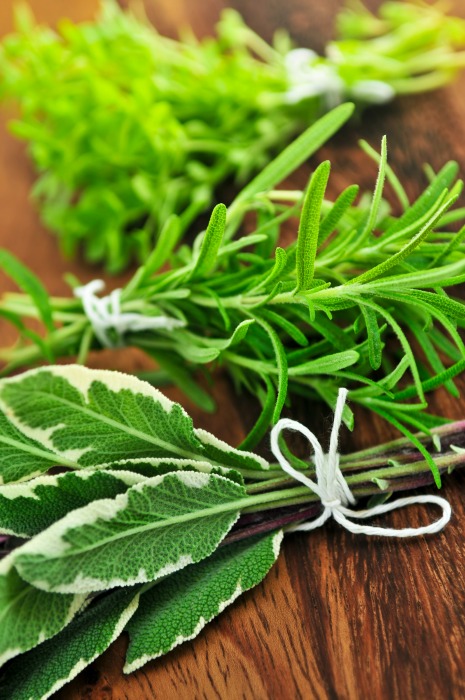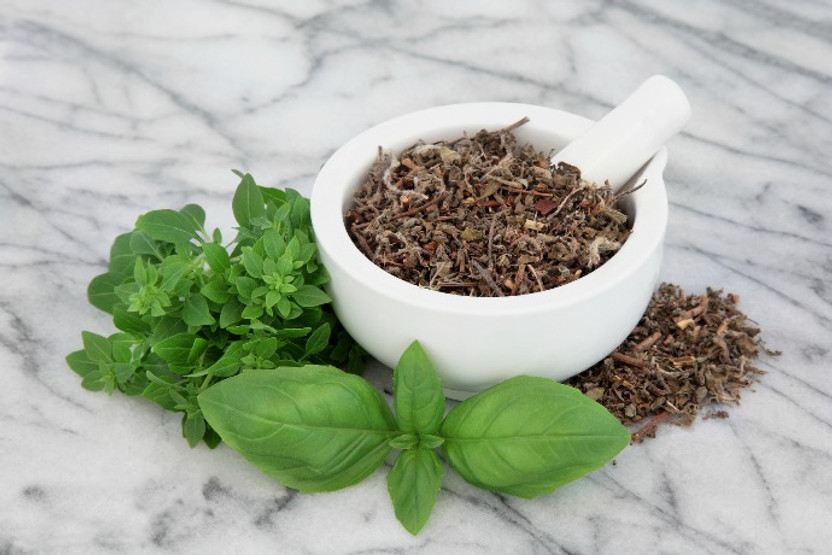Spice It Up: Dried Herbs vs. Fresh Herbs
Posted by Julie on Aug 29th 2016
With a garden full of fresh herbs ready to be picked, we've nearly forgotten about our cupboard full of dried herbs. But soon we won't have the luxury of going outside to grab a handful of basil, cilantro or mint leaves. So today we're examining the question of when to use dried herbs and when to use fresh. You might be surprised by some of our discoveries.
Dried Herbs vs. Fresh Herbs: How Herbs Change When They're Dried
When water evaporates from herbs, so do some of the flavor compounds that give herbs their characteristic scent and taste. How much flavor is lost depends on the herb and the drying method; some herbs hold up much better than others. Those herbs are the ones to use dried, instead of spending extra to buy them fresh.
In fact, you can dry fresh herbs yourself at home. More on that in a bit.

Dried Herbs vs. Fresh Herbs: Which Herbs Are Better Fresh?
You may have already guessed that the higher the water content of an herb, the better it will taste when fresh. Herbs that already contain lower amounts of water when fresh, won't be altered nearly as much when dried.
So it shouldn't be surprising that herbs like basil, cilantro and mint are far better fresh than dried. The same is true for chives, parsley and dill. In fact, Erica from Northwest Edible Life advises making substitutions rather than using dried herbs in the cases of chives, cilantro and parsley. Because drying changes these herbs so drastically, the flavor profile will be way off.
Dried Herbs vs. Fresh Herbs: When to Use Dried Herbs
Use dried herbs like oregano, thyme, sage and rosemary in recipes where they will simmer with liquid for quite a while. Soups, sauces, stews and anything made in a slow cooker are great recipe candidates for using dried herbs. Remember the standard ratio when substituting dried herbs for fresh: use one-third as much dried herbs as you would fresh. We also like Erica's suggestion for coaxing more flavor out of dried herbs: sauté them briefly with butter or oil before adding to the rest of the ingredients.
Dried Herbs vs. Fresh Herbs: How to Dry Herbs Yourself
You can dry herbs using several methods: air-drying, conventional oven, and food dehydrator. Air-dry herbs with lower water content, like rosemary and oregano. Dry moister herbs like basil and mint in an oven or dehydrator to avoid growth of mold, especially in more humid climates.
However, we're most curious to try drying herbs in our microwave oven. Serious Eats makes a smart case for why this method works: Because microwaves only heat up the water in our food, only the water evaporates, leaving more of the flavor compounds behind. Makes sense, right? Drying herbs in the microwave is faster and less damaging than the other methods, so herbs look and taste more like fresh.
Dried Herbs vs. Fresh Herbs: Key Kitchen Tools
When cooking with fresh herbs, a good pair of herb scissors will give you better results than even the sharpest knife. Watch the video on Tasting Table, and we bet you'll agree.
After drying fresh herbs by whatever method you choose, HGTV recommends storing them whole in plastic bags until you plan to use them. On the other hand, Serious Eats says go ahead and grind them. Either way, store them in an airtight container away from heat and light. No need to buy a special dried herb grinder either; a coffee grinder will do the trick.

